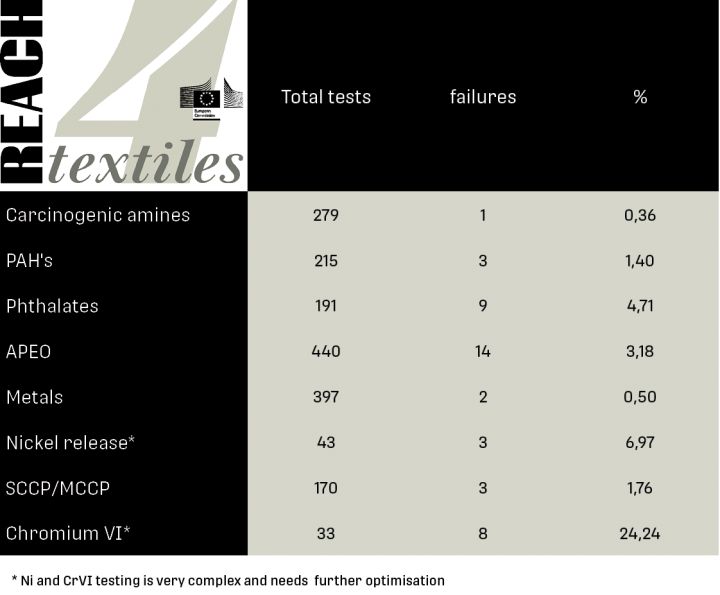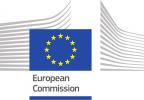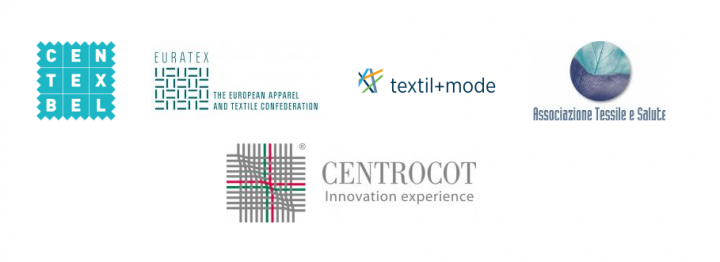On the one hand, the European Union has the world's most comprehensive chemical legislation which is set to protect consumers, the environment and, theoretically, even the competitiveness of the business.
On the other hand, about 28 billions of garments circulate across Europe, 80% of which are imported from outside the EU and its jurisdiction. Inevitably, such huge volumes pose enormous challenges for market surveillance authorities which are called to ensure that uncompliant dangerous products are kept away from the EU citizens.
Textiles are an integral part of our daily lives. Textiles are everywhere and are essential. In order to produce textiles or to improve the function they fulfil (oil and water repellency, fire retardancy, anti-static properties, etc.), chemicals are used.
Around 1900 chemical components are used in the production of textiles of which more than 150 are classified as hazardous with respect to health and the environment.
All chemicals used to produce textiles, as well as all textile articles put on the European market need to comply with the REACH regulation. However, this is not always the case, some textile products do not respect REACH regulation and can contain harmful chemical substances. Safety Gate reports show that clothing is the third most important class of materials after toys (which also contain textiles) and Motor Vehicules. In more than 20% of the cases the notified risks were related to chemicals.
The REACH4Textiles project aimed at bringing all actors together in sharing knowledge on textiles, chemical testing methods to make market surveillance more effective and to contribute to a level playing field in the textile market.
The goal of the REACH4Textiles project is
- to gain a more in-depth insight in the amount of textiles materials present on the market that fall under REACH regulation, and which material types or classes are more prone to contain hazardous substances than others.
- to acquire knowledge about the different test methods, their reproducibility accuracy, detection limit and quantification limit. An element here is the development of a tool for strategic experimental design and the development of methods for rapid decision making (risk-based) on site (customs) in order to further control critical products (imports). To reach these targets, samples of different textile materials are collected on the field: in shops and via e-commerce platforms, public markets, at customs.
- to create awareness at market surveillance, disseminate the lessons learned on testing for harmful chemicals and to bring market surveillance actors together to exchange best practices and to provide training for more effective market control, focusing on textile products, production techniques and the chemicals used, transfer of test method where appropriate, interpretation of test results in order draw conclusions.
REACH4Textiles has outlined the relevant market surveillance authorities for textiles in Europe, potential overlaps and cooperation levels between the authorities with a particular focus on the enforcement of textile labelling and textile REACH compliance in EU Member States and the EEA, Switzerland and Turkey.
REACH4Textiles has also conducted two testing campaigns (160 articles were tested by means of 2374 tests) of which you will find the main findings below.
The project in figures
Total number of tests performed: 2374
- total number of failed tests: 43
- failure rate: 1.81%
Total number of tested articles: 160
- total number of non-compliant articles: 26
- failure rate: 16.25%
Countries of origin versus totality of non-compliant articles
- 42.31% China*
- 23.08% unknown
- 1.54% Bangladesh
- 3.85% (Portugal, Pakistan, North Macedonia, Burma, The Netherlands and India)
Please note
*66 of the 160 tested articles were produced in China, 11 of which were non-compliant
Other observations
- Highest non-compliance rate on chromium VI, followed by nickel release, phthalates, NPEO, SCCP/MCCP, PAH’s, metals, and carcinogenic amines.
- Non-compliant articles were found in all textile categories (except for bedlinen): babywear, underwear/swimwear, nightwear, apparel, outerwear & other
- Non-compliant articles were encountered in every type of market: brand shop, fast fashion or retailer, local market, online high/low level, online China and outlet center.
Detected chemicals
Final conclusions
1st test campaign: every non-compliant article failed on only one parameter
2nd test campaign: more targeted selections based on the input from the 1st test campaign resulted in multiple failures per non-compliant article.
- Risk-based approach is working
- Buy enough material for testing
- The project has defined all higher risk chemicals and product groups
- Tested OEKO-TEX® certified articles fulfill legal requirements (read more)
RISK-BASED TEXTILE TESTING MATRIX
Structure and available expertise in market surveillance of textiles in Europe
The report makes a number of recommendations based on its findings that the approach to market surveillance varies widely between EU Member States.
Risk-Based Textile Testing
Based on the results of 2 campaigns that tested a range of chemical components in 160 complex articles, a risk-based testing matrix was developed that identifies exactly which chemicals need to be tested.
Project partners
The project has been coordinated by Centexbel










